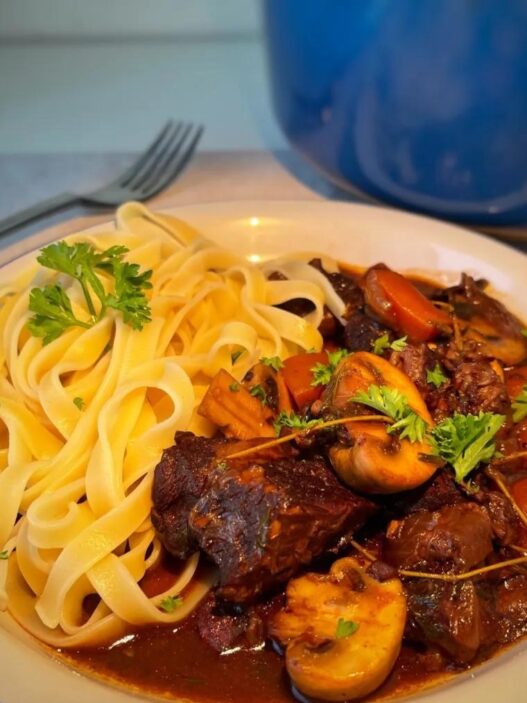Korea’s love for instant noodles (라면, ramyeon) goes beyond a simple craving—it’s a cultural phenomenon. But how did this humble dish become a national staple? Let’s rewind to its origins and evolution in South Korea.
The Birth of Korean Instant Noodles
In the early 1960s, the South Korean food industry was still in its infancy. Inspired by Japan’s Nissin Foods, Samyang Food introduced Korea’s first instant noodles, Samyang Ramen, in 1963. However, it didn’t gain instant popularity.
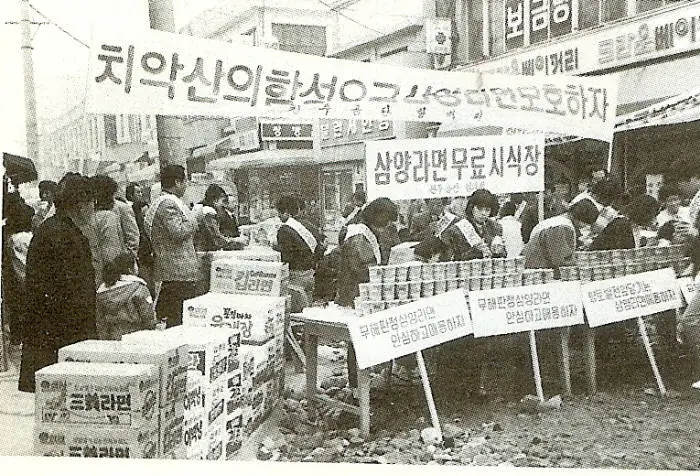
Why? Two major reasons:
- No Wheat, No Habit – The Korean Peninsula’s climate and soil were unsuitable for wheat farming. Traditionally, Koreans ate buckwheat noodles (naengmyeon), which were mostly reserved for ceremonial occasions.
- Lost in Translation – The term ramyeon (라면) was directly borrowed from the Japanese word ramen. But in Korean phonetics, 라면 could also mean ramyeon, a type of cotton fabric, leaving many puzzled about what was actually being sold!
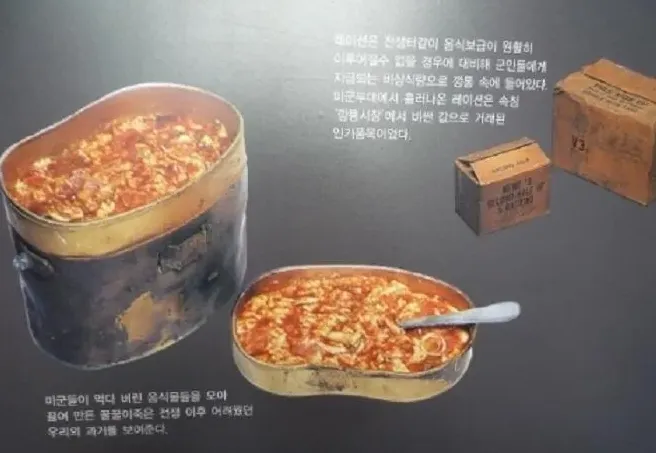
From Rejection to Instant Success
Initially, sales were slow, with only 200,000 packs sold in 1963. But Samyang had a trick up its sleeve—free public tastings! Employees handed out samples in parks and theaters, banking on the irresistible aroma of a freshly cooked bowl.
And it worked—by 1966, monthly sales soared to 2.4 million packs, and by 1969, it skyrocketed to 15 million packs.
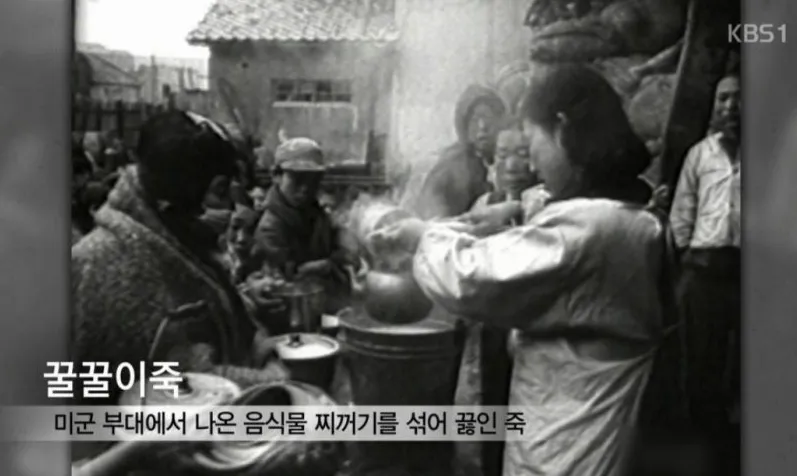
What fueled this growth? Price. At just 10 won per pack, Korean instant noodles were a steal compared to other foods:
- A pack of cigarettes: 25 won
- A cup of coffee: 35 won
- A movie ticket: 55 won
- A bowl of black bean noodles (jjajangmyeon): 50 won
Even more astonishingly, an alternative street food at the time, meokjuk (멱죽)—a soup made from U.S. military base leftovers (sausages, spam, chickpeas, cheese, and bread)—was sold for 5 won per serving. Compared to meokjuk, instant noodles were an actual meal!
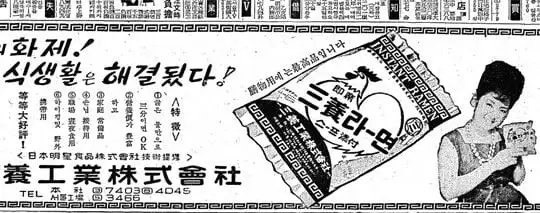
Korean Instant Noodles: A Political and Economic Powerhouse
In the 1960s and 1970s, South Korea faced a rice shortage. To combat this, the government launched the Flour Consumption Promotion Movement, urging people to consume more wheat-based products. As a result, Samyang’s instant noodles became a state-endorsed staple.
Even South Korea’s then-president, Park Chung-hee, reportedly enjoyed a bowl after drinking, once suggesting to Samyang’s executives
This small suggestion would lay the foundation for Korea’s signature spicy instant noodles.
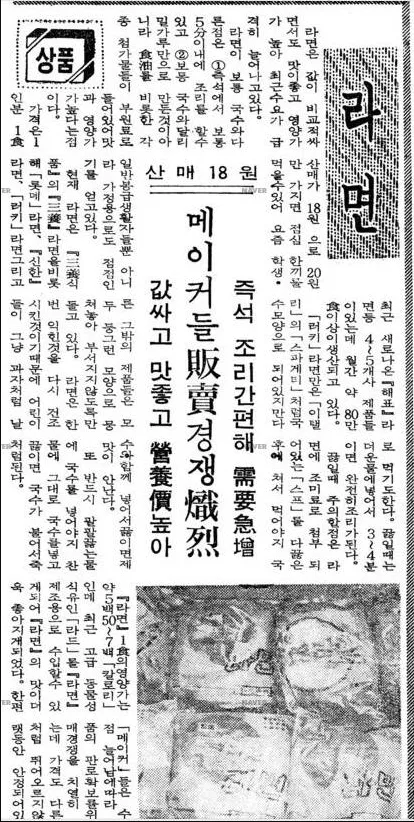
The Rise of Nongshim and Spicy Korean Instant Noodles
By the late 1960s, competition was heating up. Companies like Lucky Ramen and Lotte Foods entered the market. One key player was Nongshim, founded by Shin Chun-ho, the brother of Lotte’s founder, Shin Kyuk-ho. The rivalry even led to a family split, with Shin Chun-ho establishing Nongshim as a separate entity.
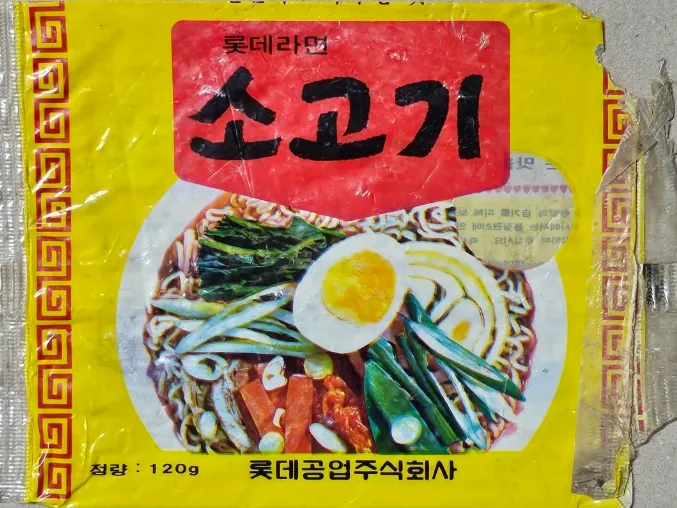
Nongshim took a bold step by introducing stronger, richer flavors, including beef broth-based noodles and jjajangmyeon-flavored ramyeon. Their market share grew exponentially.
By 1985, Nongshim overtook Samyang as Korea’s top instant noodle brand. Two events cemented its dominance:
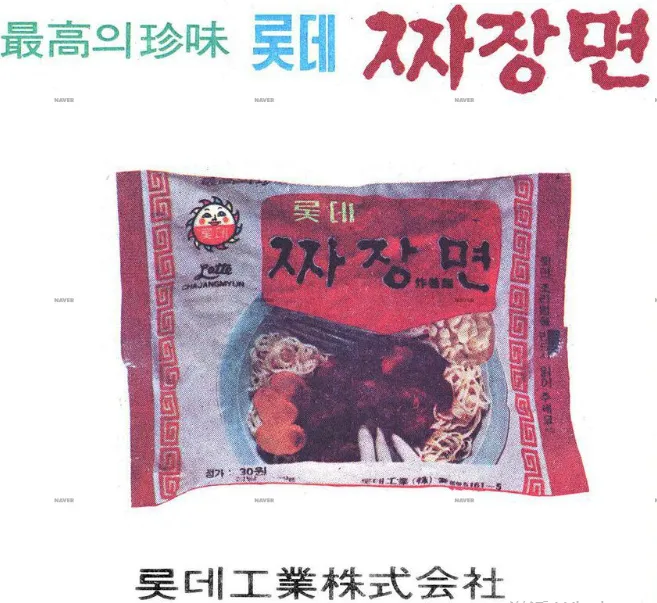
- The Birth of Shin Ramyun (1986) – Named after founder Shin Chun-ho, this was the first Korean instant noodle to heavily emphasize spice. The launch coincided with major international events—the 1986 Asian Games and the 1988 Seoul Olympics—which helped market its “hot and fiery” image worldwide.
- The Industrial Beef Fat Scandal (1989) – When rival brands were hit by a scandal involving contaminated beef fat, Nongshim emerged unscathed by using palm oil instead. This strengthened consumer trust and drove sales even higher.
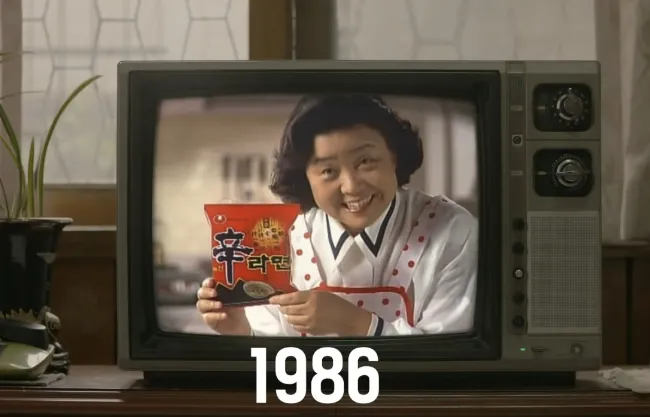
How Korean Instant Noodles Became a Global Icon
From humble beginnings to worldwide recognition, Korean instant noodles followed a unique trajectory. Here’s a quick recap:
- War-time necessity – Like Japan, Korea adopted instant noodles due to rice shortages and rapid population growth.
- Cultural adaptation – Unlike Japanese instant noodles, Korea’s were marketed as a home meal replacement, not just a quick snack.
- Government support – The push for wheat consumption in the 60s and 70s helped Korean instant noodles thrive.
- The power of spice – Park Chung-hee’s influence and the 1986-88 sports events helped establish spicy instant noodles as Korea’s signature dish.
- Crisis turned opportunity – The 1989 food scandal wiped out competitors, making Nongshim’s Shin Ramyun the undisputed leader.
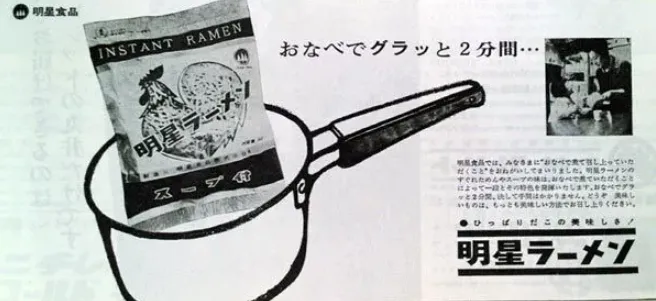
Today, Korean instant noodles are more than just food—they’re a cultural emblem, an export powerhouse, and a daily comfort for millions worldwide.


















